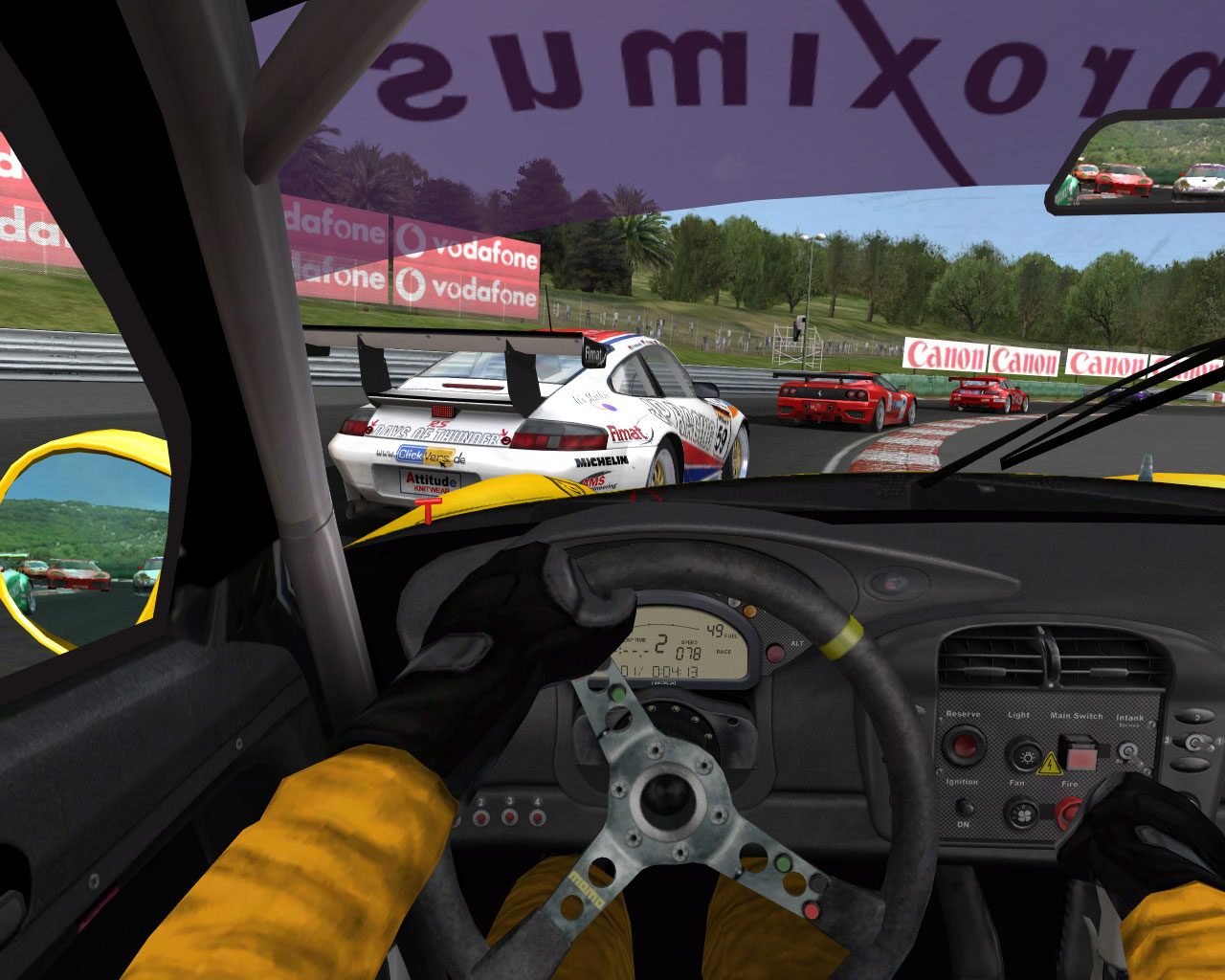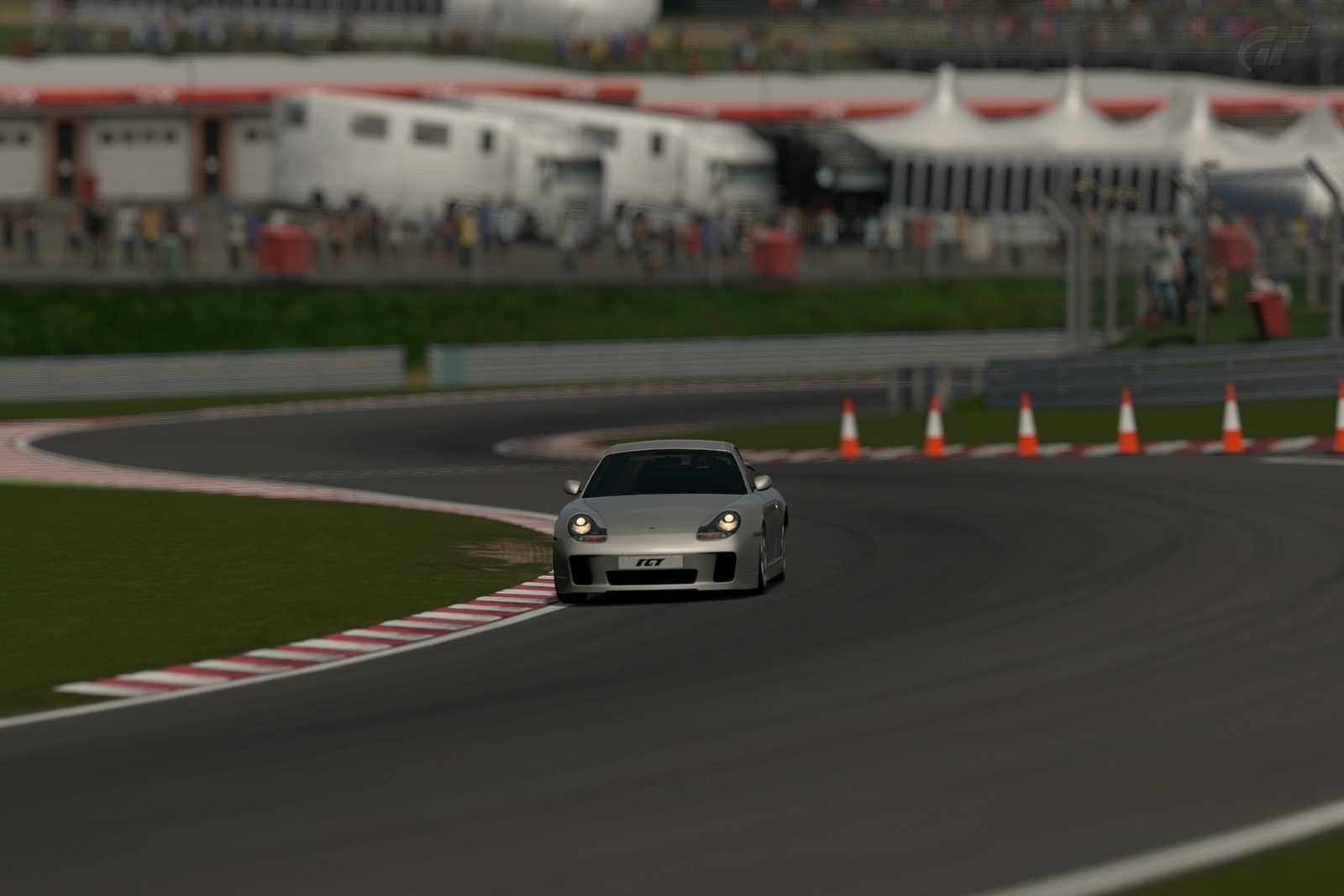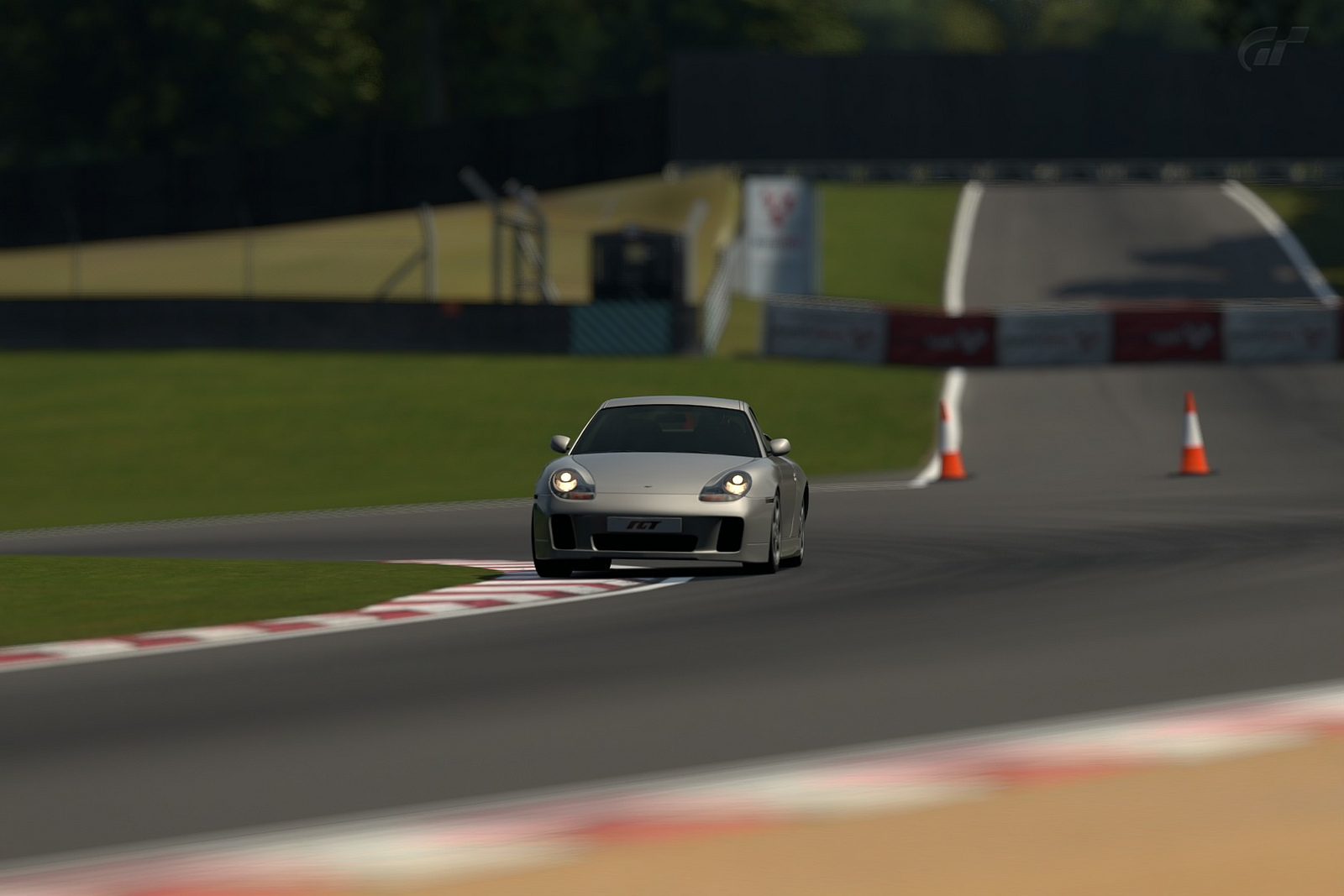Auto Motor Und Sport + Sport Auto 1988 RUF CTR Yellowbird Replica
Tuned to Replicate RUF CTR Yellowbird
Comfort Medium
CAR : RUF CTR "Yellow Bird" '87
Tire : Comfort Medium
Specs 40/60 Distribution - BASE ( Real life )
Horsepower: 462 HP / 469 PS at 6000 RPM
Torque : 407.9 ft-lb at 5000 RPM
Power Limiter at : 100%
Weight: 1222 kg
Ballast : 153 kg
Ballast Position : 18
Weight Distribution : 40 / 60
Performance Points:
522
Specs 38/62 Distribution
Horsepower: 462 HP / 469 PS at 6000 RPM
Torque : 407.9 ft-lb at 5000 RPM
Power Limiter at : 100%
Weight: 1222 kg
Ballast : 153 kg
Ballast Position : 37
Weight Distribution : 38 / 62
Performance Points:
522
Specs 37/63 Distribution
Horsepower: 462 HP / 469 PS at 6000 RPM
Torque : 407.9 ft-lb at 5000 RPM
Power Limiter at : 100%
Weight: 1222 kg
Ballast : 153 kg
Ballast Position : 46
Weight Distribution : 37 / 63
Performance Points:
522
GT AUTO
NO Oil change
Improve Body Rigidity (
INSTALLED ) -
MANDATORY
Wheels : Stock
Car Paint : Giallo Modena
Tuning Parts Installed :
Racing Exhaust
Fully Customizable Suspension
Full Customizable Dog Clutch Transmission
Weight Reduction Stage 3
Suspension - RUF Tuned Torsion Bar & Bilstein Damper
Front, Rear
Ride Height: 118 128
Spring Rate: 5.10 7.14
Dampers (Compression): 7 4
Dampers (Extension): 4 8
Anti-Roll Bars: 4 3
Camber Angle: 1.0 2.0
Toe Angle: -0.10 0.05
Alternative Alignment :
Camber Angle: 1.5 2.5
Toe Angle: -0.10 0.20
DOG CLUTCH TRANSMISSION - RUF CTR 5 Speed
Install all power parts
Set Default
Use Default Final
Set Auto Max Speed at 400kmh / 249mph
Adjust each gear :
1st 2.786
2nd 1.600
3rd 1.115
4th 0.828
5th 0.625
6th 0.596 -
Ignore for authenticity
Set Final
4.000, OPTIONAL 3.777 Corrected Final to get 211 MPH at 7000RPM
LSD 80% Lock - BASE
Initial Torque : 20
Acceleration Sensitivity: 48
Braking Sensitivity: 24
LSD 80% Lock - Higher Preload - Optional
Initial Torque : 24
Acceleration Sensitivity: 48
Braking Sensitivity: 24
Brake Balance:
5/5 ( personal BB) or for ABS 0 wheel : 4/4, for ABS 1 - feel free to use your preferred brake balance.
Recommended setting for DS3 user :
Steering sensitivity at +1 or +2, all aids off, except ABS 1 ( if not comfortable with ABS 0 ) with 5/5 brake balance as starting point.
Notes :
The RUF CTR Yellow Bird is a legendary tuned Porsche that breaks top speed record for production cars back in the late '80s. Alois Ruf had a different goal than most other Porsche tuner back in the day. He chose to go for less drag, more top speed, lightweight but still offers great handling for a rear engined Porsche. Using non turbo body 930, he developed the engine and twin turbo kit to produce over 469 PS for a low 1.1 Bar of boost, Alois Rud admitted that on the CTR ‘we use very big horses in Pfaffenhausen’, which means 469PS was a modest statement.. The boost level was adjustable up to 1.2 Bar, producing more than 500PS based on Yellow Bird owner reports. 29 examples were built from RUF VIN chassis ( not conversion ), while there are many more CTR built from converted Porsche ( still unconfirmed )
This replica is based on the Auto Motor Und Sport and Sport Auto 1988 Magazine reviews. Test weight was at 1222kg, with several sets of weight distribution included, from 40/60 to 37/63. Some RUF technical books and the door plate on the car itself listed the weight with distribution at 40/60. Alois Ruf also mentioned that he went a great length to improve the balance by moving components from rear to front when possible ( front oil coolers ) and aim for 40/60 distribution. Recent articles mentioned 38/62, more likely from CTR with driver onboard and built from Porsche 930 conversion. FM5 uses 37/63 distribution, which might be plausible if taken from later year Porsche 930 conversion.
Power is set at 462 HP or 469 PS ( stock ), no oil change with body rigidity improvement mandatory as the real CTR has full roll cage.
Suspension of RUF CTR uses torsion bars and Bilstein Damper with 22mm front stabilizer bar and 20mm rear stabilizer bar, specially tuned by RUF extensively at Austrian race tracks Osterreichring and Salzburgring.
The torsion bar rate value has not been confirmed and the values are too low anyway ( can't be reached in GT6 )
I decided to use real life setup already proven at the track.
The spring rate used in this replica is based on Eibach Race Springs at 50 N/mm and 70 N/mm front/rear. The setup was used in real life on 930 Turbo with 1040 dry weight built for Nordschleife track/street ( 500+PS )
Damper, ARB has been tuned to support the weight distribution and spring rate, while camber and toe uses street/mild track Porsche 930 alignment.
The MN P911 RUF CTR tested by Sport Auto has 80% lock LSD, which also replicated with medium preload LSD. RUF offers lower lock 60% LSD as standard fitment on each RUF CTR and BTR sold to the public with 80% lock used on the 1st CTR as option. The high lock LSD might be too much for the usual customer who drive their car daily.
Gearing has been corrected with RUF gear set as offered in their brochure. The 5 speed uses 4.000 final, and the 6th gear in GT6 should not be used. I have also provided optional final at 3.777 to replicate the real life test result at 211mph @7000 RPM ( redline )
The RUF CTR was tuned and tested at Tsukuba, Red Bull Ring, Midfield and Spa. The real life record at Tsukuba in Best Motoring was 1:06.12. Using 38/62 distribution, oil changed build ( 463HP using limiter ), 1222kg, 3.777 Final, the RUF managed 1:05.808 lap on CM tire.
Updated : Changed 40/60 spec as base based on test review against Assetto Corsa and real life data. Added optional LSD with higher preload and alternative alignment with higher camber and more rear toe in.
Special Review by @Lewis_Hamilton driving both GT6 version replica and Assetto Corsa and 1080/60 fps video of the lap at Spa on both GT6 replica and Assetto Corsa Yellow Bird :
Ok, so I've ran some laps of the 38/62 weight distribution set up in GT6, and then hopped on to AC (both games running at the same time). Tried some laps at default LSD (40%), and at 80%. There's also the option for 60% which I haven't tried.
Initial impressions are that GT6 is both too slippery and grippy at the same time, if that makes any sense whatsoever, and I'm wondering how much of this comes down to GT6's track grip settings, broken camber physics and pandering to the casual players. Between the two games, I matched the same time of day, ambient temps and weather conditions (50% GT6 / mid-heavy cloud cover AC), and in AC I set the track to optimum conditions - which is the equivalent of a whole field of cars that have rubbered in the track for many laps. The reason why I've picked this rather than a none rubbered in track that's slick and slippery is because the YB in AC would be even slower. Interestingly, the look of the lighting/atmosphere in both is very similar.
As for the car:
In GT6 with 38/62 WD, the back end steps out both more frequently, easily and by much greater angles, but at the same time, it is still holding higher cornering speeds and is easy to recover, not once did I spin or go flying off the track. In AC, both with 40% and 80% LSD, the car feels more stable/planted but has lower cornering speed ability. 80% feels too safe to me however. The biggest difference is that in AC, you only need about half of the momentum of the weight shifting around at the rear in order to put the car in a situation where it is impossible to save and you end up facing the wrong way, no matter how quickly you react, what you do with the pedals or steering wheel. If you try and shift the weight around quickly, it's going to spin every time, where in GT6 it turns into an angled drift which you can save.
Another thing I noticed is that there is more wheel spin in AC - coming out of any corner in 2nd gear - despite GT6 being on the 2nd least grippy set of tyres. To match AC in this regard and cornering speeds, I think you would have to go down to CH tyres. In my opinion the problem is when you do that on GT6, it starts to feel like you're driving in the wet, you just don't have that feeling of connection with the road. Trying to match what I was doing in GT6 either resulted in going wide or the rear coming around despite initially being at much lower slip angles than GT6, but I have always complained about this issue for lord knows how many years, GT6 is just too forgiving and allows you to be far too aggressive, that's just how the physics are. Over all, lap times in GT6 were 4-5 seconds quicker around Spa. I'd test around Tsukuba but I don't think the Tsukuba that's been modded by whoever in AC is of high enough quality, at least Spa is fully modeled and laser scanned by Kunos.
I'm going to give the 40/60 WD set up a go now, I reckon that will help match the two games closer together, so that there's less weight on the rear causing more wheel spin in 2nd, and so that the rear isn't swinging around so wildly and easily. Braking without ABS on both is pretty similar, you can feel the bite and lock up much better in AC (a result of the game physics and not the cars), but importantly the actual braking distances and point of lock up is closely matched.
So after the first test, I think CH tyres in GT6 will get the games to perform similar laps times and cornering speeds, but I don't think they'd be anything you could do to match the feeling you have in AC of driving a real car simply because it is much more advanced and has a lot more grunt to pull it off (hardware wise).
Please don't think I am criticizing your replica, by GT6 standards it feels great and you've done a great job, it's GT's physics that are letting it down rather than the car itself. If I drive in GT6 the same way I have to in AC then both feel more similar, it's when you come to pushing lap times that GT exposes it's flaws. I'll give you some more feedback on the other 40/60 WD and will probably try "stock" 43/57 as well.
Good news! It's a new Dacia Sandero!
Ok so I've tried out the 40/60 distribution and also bumped up the rear BB to 6. Did about 15 laps on GT6 and then jumped into AC, increased the tyre pressure but dropped it down to "Green" track settings (about medium grip out of all the options, takes a while for the track to come in). Within 5 laps I was just 5 hundredths off my lap time in GT6.
The 40/60 WD helps to match the AC versions corner entry understeer, tyre slip in 2nd gear and cornering speeds. There were differences here and there, and I also find it harder to get the line right in AC (need to fiddle with controller settings), but over all, the lap times are nearly identical. In GT6 I also had a couple of rear end snapping and off track moments like I did in AC when trying to drive both the same way. GT6's version still has a looser rear end, and it's still easier to regain control, but the behaviour of the car is much closer. Now if only GT had a tyre model, I bet you could get them to react very similar indeed, with the main differences being how the cars feel to drive due to the different physics engines.
I've saved a replay on each game. Driving style and lines will probably look quite different, but the particular lap replays I saved had a mere 0.03 difference.
I tested with the 4.000 final drive, the gearing was pretty much spot on so I didn't fiddle with it. I stuck with CM tyres, increasing the tyre pressure and ambient temp by 2 celsius in AC helped to make the car faster in AC. I tried to drive both the same, I fell behind in GT6 after Eau Rouge because the rear was sliding, but managed to catch up the gap at Bruxelles with a more aggressive exit that only GT6 would allow, from there on, both laps are almost identical, even the gear changes. I tried to keep the upshift time equal in GT6, as the YB in GT6 can upshift instantly, whereas in AC the game simulates this better. Basically I let go of the throttle for the same amount of time that I would in my real life car when "giving it the beans".
Though I agree that adding more camber would have helped adjust the lap time, I think it would have made the car too slippery, GT6 already feels like it's on ice when you've just come from AC, there is so much difference in the feeling even if both cars are doing the same thing. Anyway here's the video, split screen 1080p/60.





